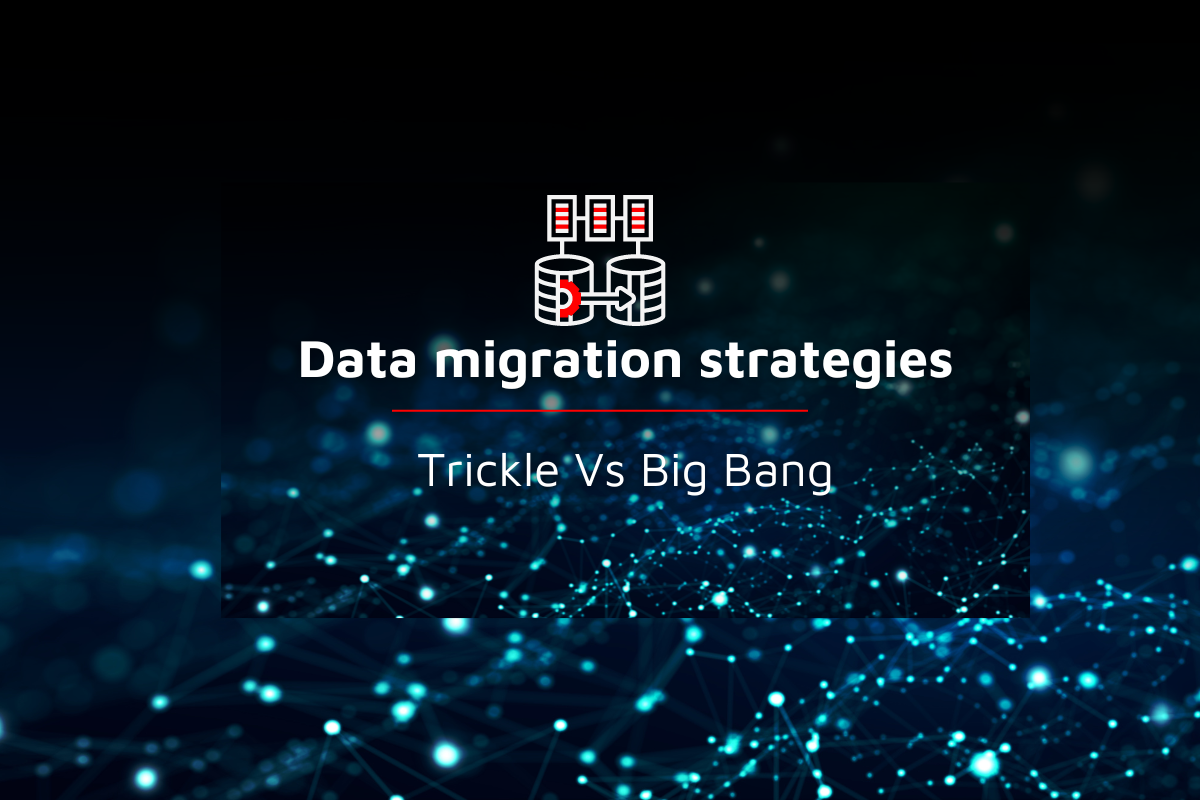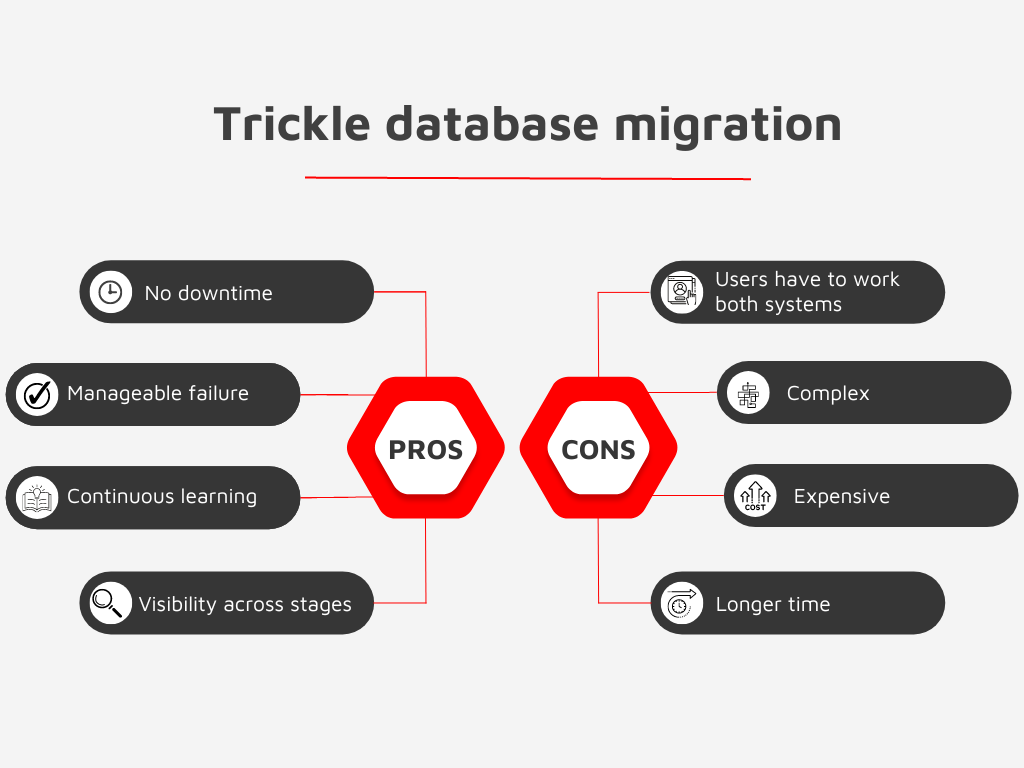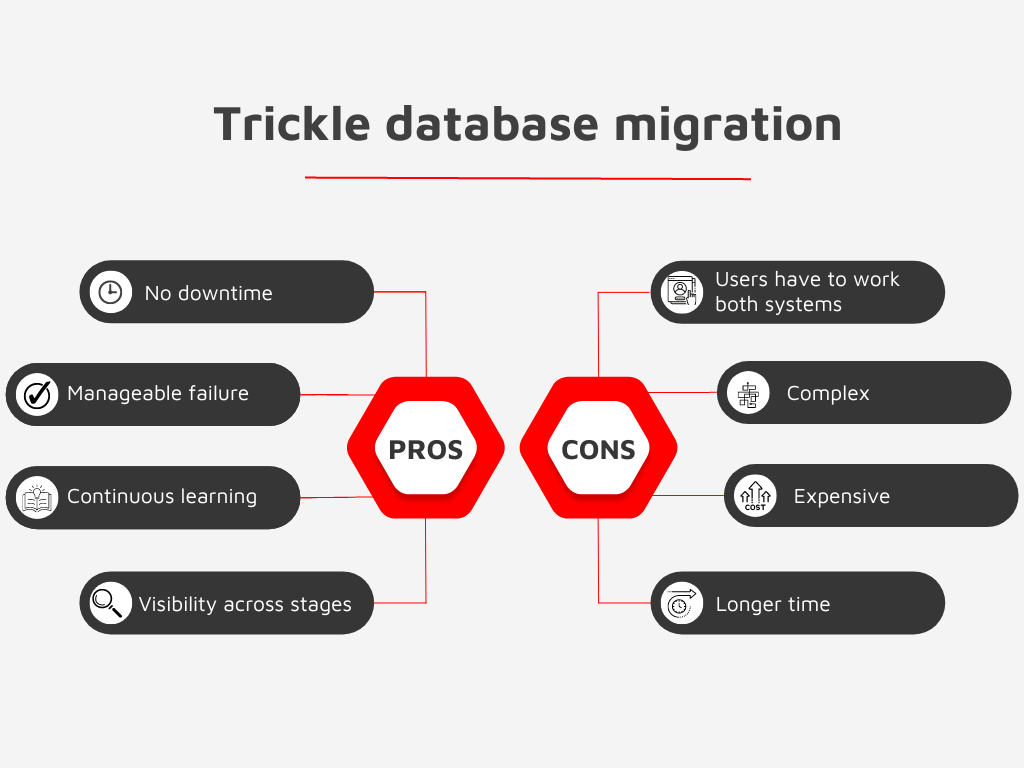Data migration strategies – Trickle Vs Big Bang
9 September 2022 | Noor Khan

Are you looking to migrate your data? Is it because your data has outgrown your existing systems or do you want to centralize your data? Whatever, the reason behind your decision, data migration can provide incredible benefits to organisations ranging from improved data performance, collated information, and data set, reduce long terms costs and increase ROI. Ensuring you choose the right data migration strategies is important for you to successfully complete your data migration within the set time and budget.
There are two main types of data migration strategies. We will explore each one, the key benefits and limitations of each and how to choose which is the right strategy for your data and organisation.
Trickle database migration
Trickle migration is the migration of data in small increments, hence the name ‘trickle’. The data is broken down and organised in chunks to carry out the migration for each separately. Each chunk of data migration will have its own timeline and once completed the next mini-migration can begin. This ensures that should an error or failure occur the entire data migration is not impacted. Only, the data migration at hand is affected which makes dealing with these issues a lot more manageable for the data migration teams.
There are some key benefits and limitations to consider if you are looking to migrate your data with the trickle database migration.

Key benefits of trickle database migration
- Manageable failure recovery
- No downtime is required
- Any lessons learnt can be applied to subsequent mini-migration
- Visibility across data migration stages
Limitations of trick database migration
- It may require a longer time with multiple mini migrations
- Users have to work with both systems to access their data during the migration process
- Can be more expensive to maintain both source and destination systems
- Can be more complex with the syncing of data
Big bang database migration
Big bang database migration is data that is migrated in one phase. The entire database migrates from one system to another, therefore a significant level of preparation is key. To ensure minimal disruption to a business's operations, designing, planning and testing are key. With this method there will be downtime of the system when the actual ‘bang’ data migration is taking place, this will vary depending on a wide range of factors including volume of data, variety of data, data source and destination and the technologies employed.
There are a number of key benefits and limitations of big bang database migration and they include:

Key benefits of big bang database migration
- It can be in-expensive if all goes to plan
- One big migration can be simple compared to parallel migrations taking place
- The actual migration point is in a short time frame
Limitations of big bang database migration
- If one error occurs it can impact the entire data migration
- This can result in extended downtime and high costs
- Downtime is required for both source and destination systems
Data migration strategies - Big bang database migration Vs Trickle database migration

Choosing the right data migration strategy is key to avoiding dealing with longer downtimes and costly failures. Therefore, you will need to take these factors into consideration:
- Are you able to have a downtime of your systems or do the systems need to be up and running to ensure data consistency?
- What is your budget? As big bang can be the more cost-effective solution if no major issues occur.
- What is the volume and variety of data, which will ultimately affect the duration and the strategy selected?
- How accessible does your data need to be during the migration process?
Ardent data migration solutions
If you are unsure about what data migration strategy is right for you, then speak to an experienced data engineering services provider to get an insight into what is best suited to your data and your organisation. Ardent has worked with a wide variety of clients to deliver data migration solutions with minimal disruption to day-to-day operations.
Find out how to create an effective data migration plan to ensure its a success and the key challenges of migrating data.

If you want peace of mind whilst migrating your data with experienced professionals, then get in touch to find out more.
Ardent Insights

Are you ready to take the lead in driving digital transformation?
Digital transformation is the process of modernizing and digitating business processes with technology that can offer a plethora of benefits including reducing long-term costs, improving productivity and streamlining processes. Despite the benefits, research by McKinsey & Company has found that around 70% of digital transformation projects fail, largely down to employee resistance. If you are [...]
Read More... from Data migration strategies – Trickle Vs Big Bang

Stateful VS Stateless – What’s right for your application?
Protocols and guidelines are at the heart of data engineering and application development, and the data which is sent using network protocols is broadly divided into stateful vs stateless structures – these rules govern how the data has been formatted, how it sent, and how it is received by other devices (such as endpoints, routers, [...]
Read More... from Data migration strategies – Trickle Vs Big Bang

Getting data observability done right – Is Monte Carlo the tool for you?
Data observability is all about the ability to understand, diagnose, and manage the health of your data across multiple tools and throughout the entire lifecycle of the data. Ensuring that you have the right operational monitoring and support to provide 24/7 peace of mind is critical to building and growing your company. [...]
Read More... from Data migration strategies – Trickle Vs Big Bang






